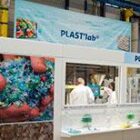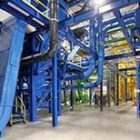RECYCLING GROWING IN INDIA’S VAST MARKET
“We will evolve a scheme to encourage cities and municipalities to take up waste-to-energy projects in the [public-private partnership] mode, which would be neutral to different technologies.”
The plan could provide a much-needed impetus to India’s recycling industry. It would explore viability gap funding, repayable grants and low-cost capital.
Gujarat, which recycles about a fourth of the plastics waste of the country, is regarded as one of the most environment-friendly states in India. More than 10 percent of the plastic products in the state are recycled, according to a study by Recycle Trade India, a recycled-material exchange in Bangalore. Around 4.4 billion pounds of plastics are recycled annually in India; Gujarat alone recycles about 1.1 billion pounds of that amount.
Still, the country’s government is far from pro-plastic. For example, India’s biggest government-owned transport company, Indian Railways, plans to replace its plastic cups with ones made from bio-based and recycled material for catering purposes.
Despite such challenges, India’s plastics recycling industry appears to be upgrading itself, according to many companies that exhibited at Plastasia, held Feb. 22-25 in Bangalore.
“Plastic recycling is growing in India and the market is huge,” said Bhavik Mehta, senior marketing executive at Leevams Inc. The Vadodara-based company represents many European recycling equipment companies in India including Erema, Neue Herbold, Kongskilde and Weima.
“We have grown around 30 percent each year from the last five years and hope to grow 40 percent this year,” Mehta added.
“We will soon be making pulverizers,” said Mehta, adding that the firm plans to license production of Weima shredders soon.
Jiaxing, China-based Zhejiang Boretech Co. Ltd. also is active in India. “We have supplied 34 PET [post-consumer] bottle recycling systems in India in last five years,” said company representative Alex Xiang.
Boretech supplied 70 recycling and washing lines up to 2012. The firm is now focusing on Africa also. “PET recycling is new to Africa and we are working on a number of projects in Tanzania, Sudan, Egypt and South Africa,” he said.
S+S Separation and Sorting Technology GmbH of Schönberg, Germany, also has a presence in India. Marketing & Sales Pvt. Ltd. aided S+S in setting up a Pune office for the service, installation and commissioning of S+S recycling equipment. M+V is part of German business development firm Maier + Vidorno GmbH of Cologne.







